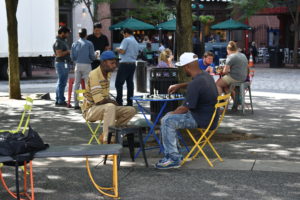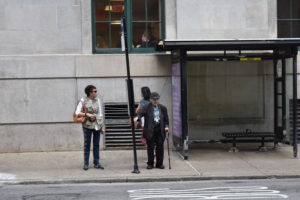By: Sophia Pedigo
Is Pittsburgh as diverse as it thinks it is? In WalletHub’s “Most Diverse Cities” survey, Pittsburgh was ranked 273rd out of 501 cities, a not-so surprisingly low number, according to several of the city’s residents.

Photo By: Sophia Pedigo
The survey ranked cities based on five key factors; socioeconomic, cultural, economic, household, and religious diversity. “We conducted our analysis using the Herfindahl-Hirschman Index method, which is a commonly accepted measure of market concentration that also works effectively as a general-purpose measure of diversity (e.g., race/ethnicity, occupations, languages, nationalities),” says Adam McCann of WalletHub.
Melanie Harrington, the first President and CEO of Vibrant Pittsburgh, has a possible answer to why the city has been ranked so low for so many years. In a 2015 interview with Pittsburgh Post-Gazette, she said, “[The PA workforce is] lacking in diversity in almost any measure.” Minorities only held 11% of jobs in the metro area in 2015.

Photo By: Sophia Pedigo
During times of deindustrialization in the United States, hundreds of Pittsburgh’s steel mills shut down. Over 100,000 employees were laid off and many had to move to find jobs. However, a few employees had connections with higher-ups and could manage to stay in Pittsburgh; “And those jobs that were available tended to go to people who employers already knew — a type of sociometry,” according to Larry Davis in a 2016 interview with Public Source. These connections often happened between Caucasian males, leading to other races or genders to move to find jobs.
Jayme Kerr, the new Coordinator for Point Park University Center for Inclusive Excellence, spoke on the subject of diversity in the staff and students in the world of academics. She says, “It’s not just about making sure we have A, B, and C when we’re talking about diversity present in this policy, but let’s make sure that we are allowing the students to converse because then you are having other students influencing fellow students on their background.”
Networking and nepotism is still relevant in today’s hiring process. In certain careers, it can seem to be more helpful in getting a job than a degree. Kerr said that while networking is a beneficial skill to have, it should not hold as much weight as it does.
Racial and gender quotas are still in companies and schools, raising the question of if the diversity and making of a comfortable environment is used to look good or because these companies and schools really care for these people. Kerr says, “It seems as though people are truly concerned.”
Kerr worked at the George Washington University before returning to her hometown and had the opportunity to compare D.C. to Pittsburgh. The two cities are much different, with D.C. being a progressive, young city while Pittsburgh is still considered to be an older city. When she returned, she noticed that Pittsburgh as a city had a “sense of urgency” and could tell that the city was aware of the lack of diversity.
According to Kerr, academia jobs tend to be more diverse and inclusive. STEM jobs are mostly male-dominated and still very much so lack diversity. Other jobs tend to vary with percentages of racial or gender diversity. Though there is the Pennsylvania Human Rights Act in act that states employers are not allowed to make employment choices based upon age, gender, race, disability, sexual orientation, background and other characteristics, this is still clearly happening.

Photo By: Sophia Pedigo
A way to get more diversity in companies and schools is to try and have the right conversations. Regardless of whether or not every different gender or race is included, conversations need to be held and people need to know what is going on.
This diversity conversation needs to be changed or started. Pittsburgh has the opportunity to be more inclusive and diverse. “Not ‘we can’ but ‘we have to’ and not ‘we should’ but ‘we’re actively doing so,’” says Kerr.